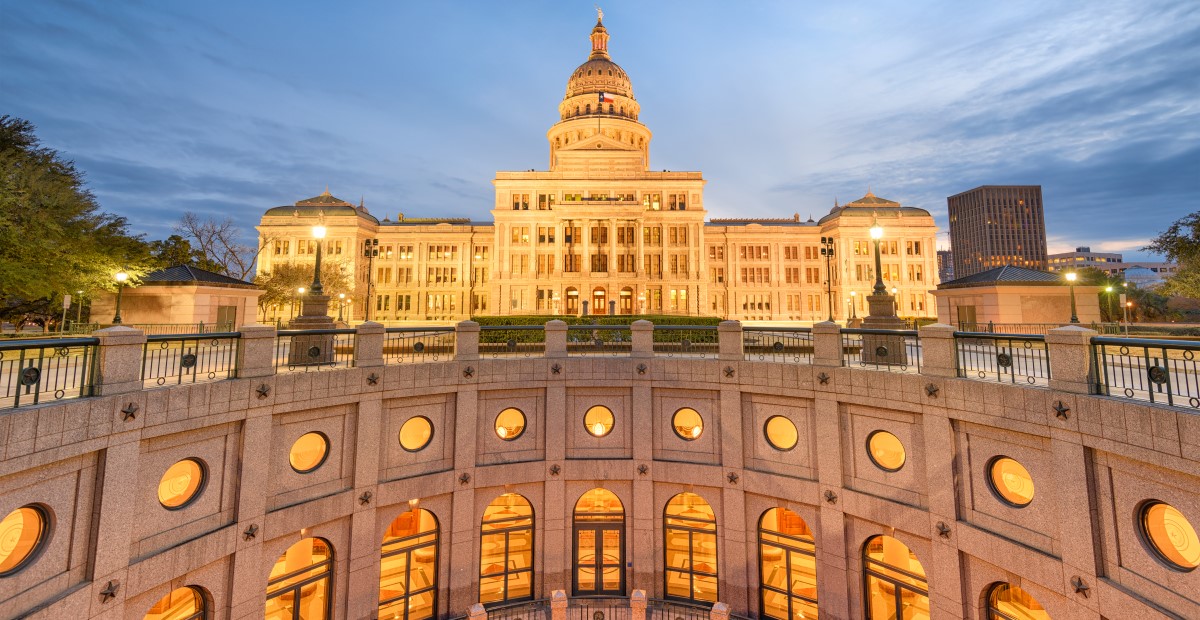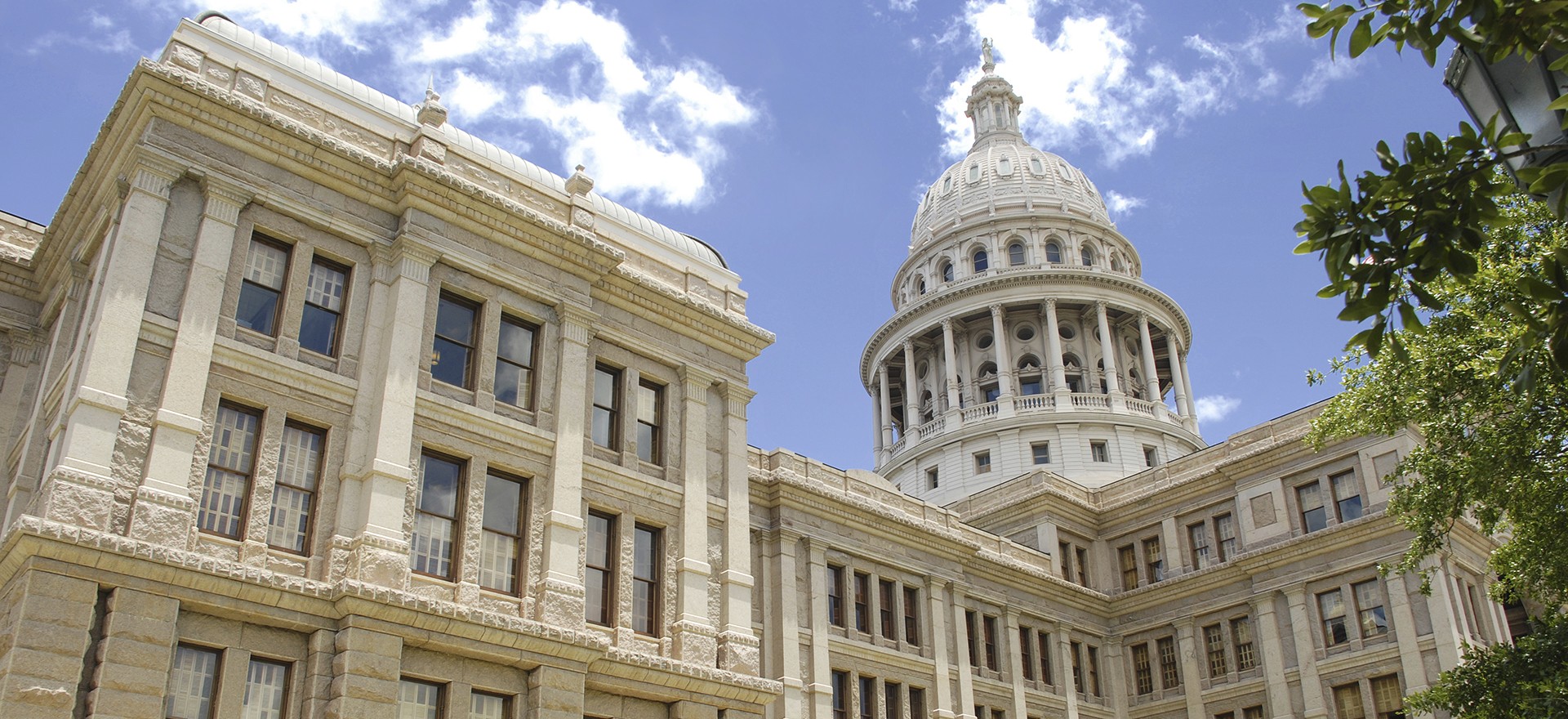An update on the 87th Texas Legislature’s budget proposals

School Finance Texas Legislature Congress | Federal
Date Posted: 4/12/2021
- The progress of the state budget proposal, already approved by the Senate and heading soon to the House floor
- How “savings” from the last biennium are being used for the next two-year budget
- A proposal that could allow a special federal spending board to circumvent the legislative process
- Why federal relief funding for education is being held up
State legislators are making progress on approving a state budget for the next two years.
 The Texas Senate approved this session’s budget bill, Senate Bill (SB) 1 by Sen. Jane Nelson (R-Flower Mound), last week by a vote of 31:0 and sent it to the Texas House for consideration. Article III of the budget is the section of the bill dealing with public K-12 and higher education funding. This article funds the school finance system as reformed by House Bill (HB) 3 from the 2019 legislative session, including $3.1 billion to fund enrollment growth and $1 billion in aid for property tax compression for the next biennium. It also maintains the schedule instituted by last session’s SB 12 for gradually increasing contributions into the Teacher Retirement System (TRS) pension fund. SB 1, as passed by the Senate, does not spend any of the more than $17 billion in federal aid dollars Texas public schools are eligible to receive under the Coronavirus Response and Relief Supplemental Appropriations (CRRSA) Act or the American Rescue Plan (ARP) Act enacted by Congress.
The Texas Senate approved this session’s budget bill, Senate Bill (SB) 1 by Sen. Jane Nelson (R-Flower Mound), last week by a vote of 31:0 and sent it to the Texas House for consideration. Article III of the budget is the section of the bill dealing with public K-12 and higher education funding. This article funds the school finance system as reformed by House Bill (HB) 3 from the 2019 legislative session, including $3.1 billion to fund enrollment growth and $1 billion in aid for property tax compression for the next biennium. It also maintains the schedule instituted by last session’s SB 12 for gradually increasing contributions into the Teacher Retirement System (TRS) pension fund. SB 1, as passed by the Senate, does not spend any of the more than $17 billion in federal aid dollars Texas public schools are eligible to receive under the Coronavirus Response and Relief Supplemental Appropriations (CRRSA) Act or the American Rescue Plan (ARP) Act enacted by Congress.
The House Appropriations Committee (HAC) discussed SB 1 in a public hearing Monday, April 12, where it was amended to include the House’s preferred budget language. Compared to past sessions, the House and Senate budget proposals are fairly similar. The amended bill was quickly and unanimously approved by the HAC committee. Now the House version of SB 1 will head to the House floor and again be subject to deliberation and amendments by any of the 150 state representatives. Unlike the full Senate, which considered no budget amendments on the Senate floor, the House typically considers hundreds of floor amendments. Once the full Senate and House have both passed their chamber’s version of the budget, a conference committee made up of members from each chamber will reconcile the differences between the two.
Appropriators plan to use “savings” from the last biennium for the next budget.
Last week, the HAC turned its attention to a supplemental appropriations bill, HB 2 by the committee's chair, Rep. Greg Bonnen (R-Friendswood). Filed every session, the supplemental bill pays for funding shortfalls in the current budget and moves any unspent funds back into the state’s General Revenue account. If you think of the Emergency Stabilization (or “Rainy Day”) Fund as the state’s savings account, then the General Revenue fund may be considered the state’s primary checking account. The state budget dictates spending amounts for state agencies and programs, and funds are withdrawn from the General Revenue account to pay for those. However, when the state “finds” additional money such as federal stimulus dollars or higher-than-anticipated local property tax collections, it uses that extra money to pay for budget items instead of using the General Revenue dollars that were planned to be spent originally. This is considered a “savings” to the state.
During the current budget cycle, the state “found” billions of extra dollars, mostly through federal COVID-19 relief funding and excess collections of local property taxes. HB 2 accounts for much of the General Revenue that had been appropriated in the state budget currently in place but went unspent because of those other funding sources. As a result, the unspent dollars move back into the General Revenue account so that they can be doled out again to pay for the upcoming budget, SB 1. Of the $6.2 billion dollars in savings identified in HB 2, about $5.47 billion is related to the Foundation School Program (FSP), which is about half the amount of the $11 billion increase for public education included in last session’s HB 3. The state’s ability to move this funding from the FSP back into the general state coffers is largely the result of three factors:
- Growth in property values, which simultaneously increases recapture and lowers the amount of state aid required for public education;
- Federal emergency funding from the Coronavirus Aid, Relief, and Economic Security (CARES) Act that was swapped for FSP funds during the spring of the 2019-20 school year; and
- Lower-than-expected increases in Average Daily Attendance (ADA), resulting in a need for less funding this biennium.

The Texas Constitution requires the Comptroller to certify that the state budget proposed for the upcoming biennium is within constitutional spending limits. As introduced, SB 1 spends approximately $6 billion dollars more than was expected to be available according to the Comptroller’s biennial revenue estimate (BRE). The savings identified in HB 2 make up most of that difference.
A special spending board could circumvent the legislative process.
As we wrote about last week on our blog, the HAC recently heard Chairman Bonnen's HB 2021, which ATPE and the three other statewide teacher groups all opposed. As filed, the bill would create a six-member “Board on Administration of Federal Funds.” The new state board would be authorized to accept or reject federal funds made available after September 1, 2021 and tasked with determining how those federal funds would be spent.
Although HB 2021 as originally filed includes some processes for public input, such as publication of board proposals in the Texas Register and a requirement of at least one public hearing, the bill largely limits the ability of the full Legislature and the public, including stakeholder groups such as ATPE, to provide meaningful input as they would during the normal legislative appropriation process. The small size of the board and the fact that it will make decisions on tens of billions of dollars of federal relief, much of which is earmarked for public schools, are also problematic. Lastly, the board’s lack of an expiration date and broadness in scope in determining the outcomes of general “federal funds” were other reasons for ATPE’s opposing the bill as filed.
 During last week’s committee hearing on HB 2021, Chairman Bonnen offered a committee substitute version of the bill, CSHB 2021, that narrowed its scope to federal funds associated with the CARES Act, the CRRSA Act, and the ARP Act. The substitute version also added four more members to the board, two from the House appointed by the Speaker and two from the Senate appointed by the Lieutenant Governor. Even with the additional members, extremely significant decisions for public education emergency funding could be determined by as few as six people because the board would be able to approve decisions with a simple majority of its members from each chamber. The substitute bill adds that the Governor must approve or reject a board-approved spending proposal within 10 days; otherwise, it is automatically approved.
During last week’s committee hearing on HB 2021, Chairman Bonnen offered a committee substitute version of the bill, CSHB 2021, that narrowed its scope to federal funds associated with the CARES Act, the CRRSA Act, and the ARP Act. The substitute version also added four more members to the board, two from the House appointed by the Speaker and two from the Senate appointed by the Lieutenant Governor. Even with the additional members, extremely significant decisions for public education emergency funding could be determined by as few as six people because the board would be able to approve decisions with a simple majority of its members from each chamber. The substitute bill adds that the Governor must approve or reject a board-approved spending proposal within 10 days; otherwise, it is automatically approved.HAC members on both sides of the aisle raised concerns about CSHB 2021, arguing that it circumvented the duty of the Legislature to set the state budget as outlined in the Texas Constitution. Some argued that the Governor should convene a special session in such situations where federal dollars are made available to the state after the legislature has already closed out the regular legislative session.
Why is federal relief funding for education being delayed?
During last week’s HAC hearing, House budget writers asked about the status of federal emergency funds related to CRRSA and ARP. Chairman Bonnen explained that there is a lack of clarity about the “maintenance of effort” (MOE) provisions in CRRSA and ARP, which require states to maintain a level of funding support for elementary and secondary education and higher education. The MOE language requires states, including Texas, to separately maintain the same percentage of funding for K-12 and higher education in the upcoming budget as they provided in fiscal year (FY) 2017, 2018, and 2019. Even though other states have already moved forward with accepting ESSER II funds, which are part of the CRRSA aid package, Bonnen argued that it is unclear whether Texas would need to apply the increases associated with HB 3 to higher education funding to satisfy the MOE requirement in the federal law.
Due to the increased public education funding from last session’s HB 3, Texas can easily meet the MOE requirement in the federal law for K-12 spending. However, that increase in K-12 funding had the result of making higher education funding a lower percentage of the state’s overall budget. There is a lack of clarity around the extent to which the state’s failure to meet the MOE requirement for higher education funding might affect the availability of K-12 schools' access to the federal relief funding. Some are concerned that the K-12 funding, if accepted and spent, could be clawed back later by the federal government. Others believe the higher education and K-12 MOE requirements in federal law are separate, and failing to meet the MOE on one would not impact the funding for the other.
Texas has requested a waiver from the federal government that would allow our state to be deemed as meeting both MOE requirements, but the waiver is unlikely to be granted before the end of the legislative session (and the deadline for adopting the budget). Alternatively, the state could increase higher education spending in the upcoming budget cycle by around $1 billion to ensure Texas students have access to the $17 billion in K-12 funding and $3 billion in higher education funding provided by Congress.
ATPE is actively advocating for educators and public education throughout the budget process. We encourage ATPE members to use our tools at Advocacy Central to contact their legislators on any education issues, including the budget and the release of federal funds to school districts.
CONVERSATION
RECOMMENDED FOR YOU

12/19/2025
Teach the Vote’s Week in Review: Dec. 19, 2025
Happy Holidays from ATPE! The ACLU of Texas is challenging SB 12 in federal court, and ATPE has distributed candidate surveys to those running for statewide, legislative, and SBOE seats.

12/18/2025
Gov. Abbott’s property tax promise and the split in the Texas GOP
Property taxes aren’t just a political talking point. They’re the main revenue source for vital local services, including police, fire, and public education.

12/12/2025
Dec. 8 filing deadline sets the stage for 2026 elections
Now’s the time to confirm your voter registration and update it if necessary.

